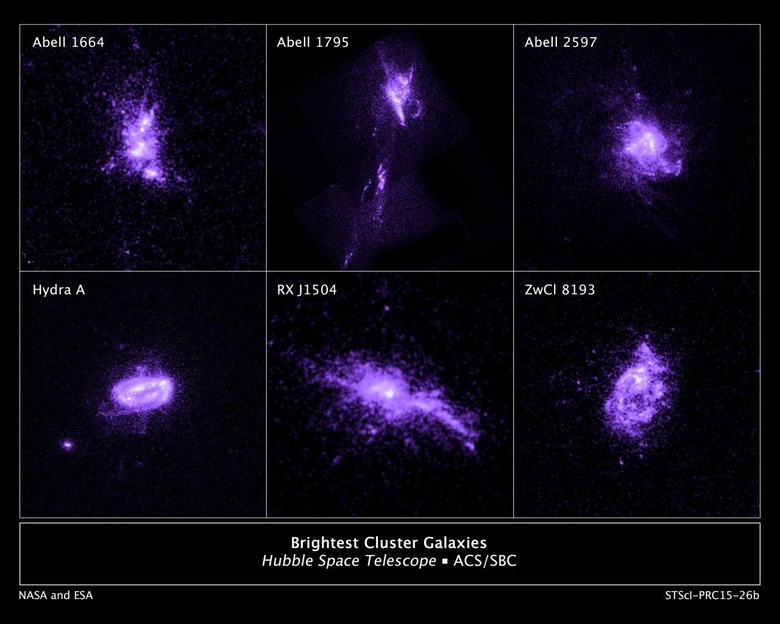Black Hole Fountains Shepherd New Galaxies Into Life
A black-hole fountain might sound like something from science fiction, but NASA believes it's actually part of a high-energy cycle by which galaxies coalesce. Combining high-resolution Hubble Space Telescope imagery with ground-based captures, scientists were able to observe knots of hot, blue stars that were forming along the jets from active black holes, with a thunderstorm of heated and cooling gases through giant elliptical galaxies.
"The 'raindrops' eventually cool enough to become star-forming clouds of cold molecular gas," Grant Tremblay of Yale University, who led one of two separate studies investigating the phenomenon, "and the unique far ultraviolet capabilities of Hubble allowed us to directly observe these 'showers' of star formation."
What was proving more confusing was how the black holes not only caused the showers, but regulated them.
Turns out, the two studies concluded, only some of the outwardly flowing gases will actually cool. The rest is heated by the black hole, slowing the cooling process overall.

"The entire cycle is a self-regulating feedback mechanism, like the thermostat on a house's heating and cooling system," NASA explains, "because the "puddle" of gas around the black hole provides the fuel that powers the jets."
So, if the gases become too cool then the black hole's jets get more powerful as a result, and pump more heat into the system. Conversely, if too much heat is added, the dwindling fuel supply for the jets slows that down.
Although anything to do with a black hole can sound impressive on a galactic scale, in fact the discovery explains why stars aren't only produced when even more dramatic collisions take place between galaxies.
"A light drizzle of cooling gas provides enough fuel for the central black hole's jets to keep the rest of the galaxy's gas hot," NASA says. "The researchers show that galaxies don't need fantastic and catastrophic events such as galaxy collisions to explain the showers of star birth they see."
At the same time, it also explains why gas-rich galaxies haven't quickly become overloaded with stars.
SOURCE NASA
